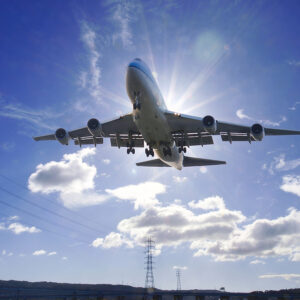For many Americans, the Boeing 737 Max plane crashes that occurred in 2018 and 2019 are a distant memory. For those of us who lost loved ones, the pain continues.
Partly that’s because, after years of legal wrangling, Boeing has largely escaped punishment. Also, the company now wants us to believe that they’re safer than ever — and only sluggish federal regulators and outdated Federal Aviation Administration rules are jeopardizing America’s airline safety. However, the real problem persists with Boeing.
Let’s be clear about something. Over the past several years, the FAA has determined that Boeing’s internal controls remain weak and that its production culture still favors speed over safety. Even the FAA’s former chief, Mike Whitaker, has said that Boeing needs a “fundamental cultural shift.” Those aren’t the words of a lax regulator. Instead, it’s the view of a public official confronting a company unwilling to change.
Consider Boeing’s recent history. The two 737 Max crashes happened before the FAA ramped up its oversight of Boeing. But the subsequent mid-air blowout of a 737 Max in January 2024 and the sudden “Dutch roll” of a 737 Max in May 2024 occurred even after increased scrutiny of the company.
Boeing downplayed the “Dutch roll,” and its only response has been a January 2025 petition for exemption for a “yaw damper” flight-control software.
The company’s internal failures continue to produce the same dangerous results. Boeing’s problems extend beyond FAA scrutiny. The company’s contract to supply the U.S. government with a new Air Force One — the most visible and politically sensitive aircraft in the world — is now years behind schedule, and running billions of dollars over budget. This delay and management fiasco are all due to Boeing’s internal problems.
Rather brazenly, though, Boeing wants to blame the FAA for its troubles. If FAA rules were a problem, Airbus, Gulfstream and Embraer would also be mired in crises. However, these companies are doing just fine. They operate under the same FAA regulatory framework, but they’re not struggling through safety lapses, whistleblower complaints and high-profile failures.
Sadly, the problem is uniquely Boeing’s, thanks to a company mindset that prizes schedules and profit over engineering discipline.
In 2024, at the direction of Congress and the FAA, 24 industry experts spent a whole year reviewing Boeing’s safety culture and procedures. The panel found significant shortcomings at every level of the company’s operations — and provided 53 specific recommendations for the strengthening of Boeing’s safety performance. If Boeing wants to produce safer airplanes, it can start by implementing these recommendations. The roadmap exists. What’s missing is Boeing’s willingness to follow it.
It’s possible that the FAA’s overall regulations can be improved. However, no rulebook can ensure the safety of the flying public if Boeing refuses to take safety seriously.
The choice rests with Boeing’s leadership. It can continue to point fingers at regulators and insist that the FAA is the problem. Or, it can confront the uncomfortable truth: their internal company culture is broken.
Implementing the recommendations of an expert panel would be a good starting point. Real change for this once-iconic American company will require courage at the top — the determination to prioritize engineering over expediency, safety over schedules, and accountability over profit. Until Boeing makes that choice, every attempt to shift blame onto the FAA will ring hollow.


